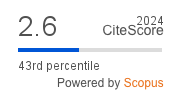Planning and Scheduling in Additive Manufacturing
DOI:
https://doi.org/10.4114/intartif.vol21iss62pp40-52Abstract
Recent advances in additive manufacturing (AM) and 3D printing technologies have led to significant growth in the use of additive manufacturing in industry, which allows for the physical realization of previously difficult to manufacture designs. However, in certain cases AM can also involve higher production costs and unique in-process physical complications, motivating the need to solve new optimization challenges. Optimization for additive manufacturing is relevant for and involves multiple fields including mechanical engineering, materials science, operations research, and production engineering, and interdisciplinary interactions must be accounted for in the optimization framework.
In this paper we investigate a problem in which a set of parts with unique configurations and deadlines must be printed by a set of machines while minimizing time and satisfying deadlines, bringing together bin packing, nesting (two-dimensional bin packing), job shop scheduling, and constraints satisfaction. We first describe the real-world industrial motivation for solving the problem. Subsequently, we encapsulate the problem within constraints and graph theory, create a formal model of the problem, discuss nesting as a subproblem, and describe the search algorithm. Finally, we present the datasets, the experimental approach, and the preliminary results.
Downloads
Metrics
Downloads
Published
How to Cite
Issue
Section
License
Copyright (c) 2018 Iberamia & The Authors

This work is licensed under a Creative Commons Attribution-NonCommercial 4.0 International License.
Open Access publishing.
Lic. under Creative Commons CC-BY-NC
Inteligencia Artificial (Ed. IBERAMIA)
ISSN: 1988-3064 (on line).
(C) IBERAMIA & The Authors










